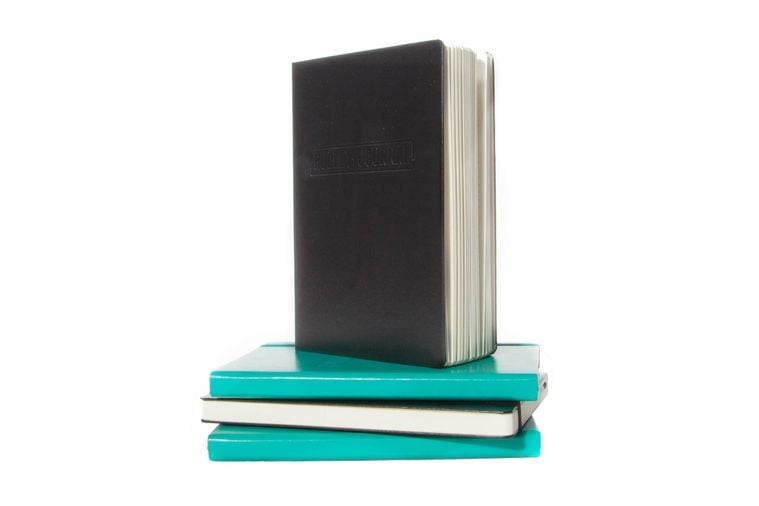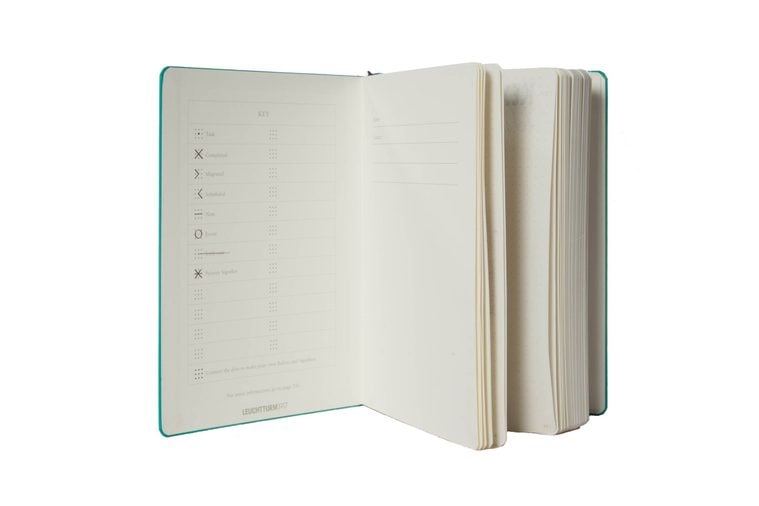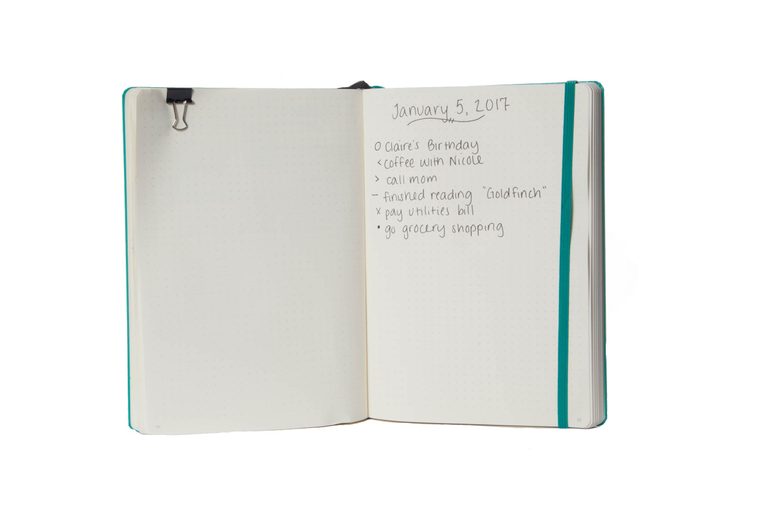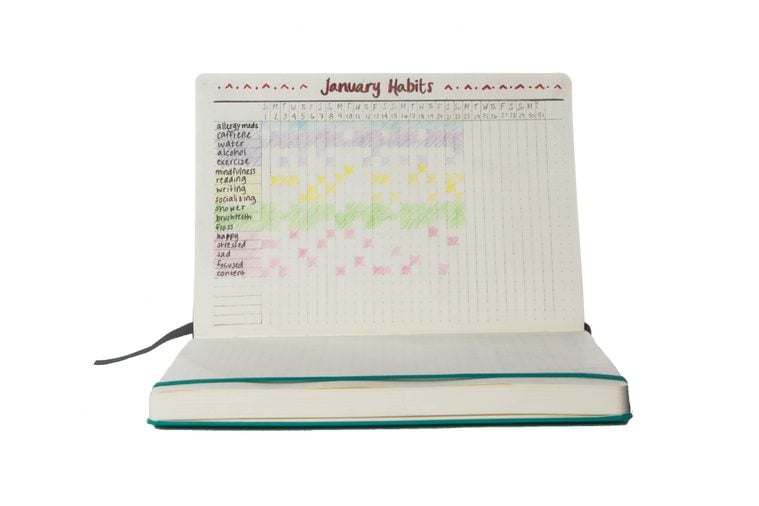Stressed? Here’s Why You Need to Start a Bullet Journal
Updated: Nov. 04, 2020
This innovative way of journaling will make your hectic life so much more manageable.
 We all have our own ways of handling stress: eating comfort foods, unwinding in front of the TV, talking it out with friends. Unfortunately, these are all stress relievers that may actually backfire and hurt your health even more.
We all have our own ways of handling stress: eating comfort foods, unwinding in front of the TV, talking it out with friends. Unfortunately, these are all stress relievers that may actually backfire and hurt your health even more.
Journaling is another potential stress reliever that can make you more stressed. Every time I try to start a journal, I obsess over making each entry perfect instead of just free writing about whatever I feel. In the end, I spend too much time planning and not enough writing, and the journal just stays blank.
Bullet journaling wants to change that. This new approach to journaling first appeared last year and is slowly taking over the Internet. It basically combines a diary, a planner, and a to-do list into one super-organized format. Once you see your hectic life neatly laid out in front of you, you will feel more in control and more equipped to manage it.
A quick disclaimer: Learning how to keep a bullet journal can be a bit overwhelming at first (which totally defeats the purpose of using it as a stress reliever). But once you get the basics, it becomes intuitive. You may never journal any other way again.
 What is bullet journaling?
What is bullet journaling?
Bullet journaling relies on writing quick notes. Rather than composing long paragraphs about your day like traditional journaling, you make bullet points (see where they got the name from?) on the day’s highlights. This is called rapid logging.
Those bullet points are marked with different symbols depending on what they are. Here are the six symbols and what they mean:
• : Put a bullet next to things you need to do (like any to-do list)
x : Put an “x” over the bullet once the task is complete
< : Write a less than symbol if the task has been scheduled for another day > : Put a greater than symbol next to tasks you didn’t get done today and need to be “migrated” to another day
o : This is an event, like a get-together or an anniversary
– : Use a dash for notes or smaller events.
These bullets should be kept short, just so you can see everything at a glance. You can expand on anything you need to afterward. It’s a good idea to keep a key somewhere in your journal to remind you what these symbols mean. Put it in the front or back of your journal, or write it on a notecard that you can use as a bookmark. And speaking of journals…
What kind of journal should I use?
Any kind of journal or notebook will do, but the official Bullet Journals, like the ones shown here, are ideal. Moleskine is another popular choice. The important thing is to make sure it’s a good size. As the website says, “If it’s too big, you’ll never take it with you. If it’s too small, it will be impractical.” Check out the best bullet journals on Amazon for ideas.
I have a journal. Now what?
Now you layout the pages (formally called modules) that you’ll write those nifty bullet points on. You will need to number the pages, but you don’t need to number the whole journal at once. You can number them in chunks, every 10 pages or so.
Set aside your first few pages for an Index. Think of it as a table of contents. It tracks important activities or events you write about throughout your journal, like Family Vacation or Marathon Training. Just jot it down and whatever page number it’s on so you can find it quickly later.
The next four pages will be your Future Log. Divide the pages into three boxes, one for each month. This is your yearly overview calendar to track long-term plans. Use the bullet symbols when filling it out. Don’t worry, you’ll have space for longer elaborations later.
After that comes the Monthly Log on a two-page spread. On the left page, write all the dates that month down the left margin. This is your monthly calendar. Leave the right page blank for tasks that come up. All the pages after that are for your Daily Log, your record of events, to-dos, and notes for each day. You can write multiple days on one page if you want. Otherwise, if you want more space for free writing, write the date at the top, jot down your bullets, then feel free to expand on anything that happened that day. Add tomorrow’s date to the next clean page. Once you hit the end of the month, make another Monthly Log and start over.

Those are the basics. Now for the fun part…
The best part about all of this is that once you understand the basics, you can customize your bullet journal however you want. There are so many creative examples all over the Internet and Instagram. Here are some ideas to spark your imagination.
- Use your own bullet symbols if they’re easier for you to remember, or add your own to the original six.
- Create a monthly habit tracker grid to track your mood and what affects it. Mine tracks how I feel physically, daily habits like caffeine and alcohol intake, how often I take time for relaxing activities, and what emotions I felt each day. Over time, you may notice patterns and use those to take action against negative feelings.
- Add pages (modules) to track other important things in your life, like books you want to read or movies you need to see.
- Make additional Monthly Logs and write one thing that made you happy or grateful each day.
- If you’re fitness-minded, make Daily Logs specifically to track what you eat, how much you exercise, and how much water you drink.
And if you’re still confused, watch this video from the creators.